Partry House
Houses within 15km of this house
Displaying 71 houses.
Houses within 15km of Partry House
Displaying 71 houses.
| House name | Description | |
|---|---|---|
| Moore Hall | Built in 1795 and burnt down in 1923. The residence of George Henry Moore, MP, at the time of Griffith's Valuation, when it was valued at £45. Slater refers to it as the seat of George A. Moore in 1894. The ruin is now owned by Coillte Teoranta. |

|
| Creagh | The original house was situated beside the River Robe and was described in September 1836 by Robert Graham as a "nicely laid out cottage residence". Earlier, in 1786, Wilson refers to it as the seat of Mr. Cuff. Mary Louisa Cuffe was leasing the property from Colonel Charles Knox at the time of Griffiths Valuation, when it was valued at £32. A new house was built by Colonel Charles Knox in 1875, which became a tuberculosis sanatorium and a centre for the Agricultural Institute in the 20th century. James Cuff (recorded as Duff), of Creagh, near Ballinrobe, is mentioned as the proprietor of townlands in the parish of Ballynacourty, barony of Dunkellin, county Galway, at the time of the first Ordnance Survey in the 1830s. |

|
| Levally | Home of the Fair family for a time in the 19th century. At the time of Griffith's Valuation it was leased by James Simpson from the Earl of Lucan's estate and valued at £5. It is described as a "Herd's House". It was unoccupied in the early years of this century and for sale in 2007. Demolished in September 2007. |
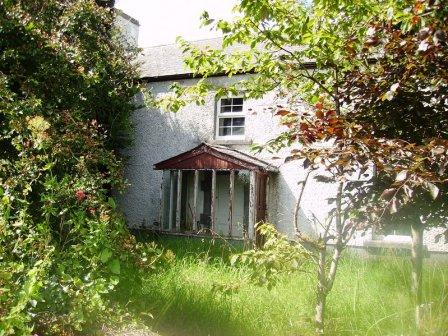
|
| Castlecarra | Granted to Sir Henry Lynch after the Restoration, it was the family's main home in county Mayo for much of the 18th century. In 1786 Wilson refers to Castle Carra as the seat of Mr. Lynch. The mansion house and offices at Castlecarra were described in 1844 by Samuel Nicholson as "now almost ruins". Castlecarra was leased to the Brownes of Castlecarra at this time and was part of their property for sale in 1852. The ruins of the original tower house are still extant but much of the surroundings are now covered by forestry. | |
| Garracloon | Wilson refers to Garracloon as the seat of Mr. Blake in 1786. In 1814 the house was occupied by the Reverend Cecil Crampton, rector of the parish of Cong. At the time of the first Ordnance Survey in 1838 Garracloon house was recorded as a ruin. At the time of Griffith's Valuation, it was held in fee by Joseph Blake and valued at £8. The house was later rebuilt, Ruane refers to the ruined Victorian Garracloon House. Sir William Wilde refers to Colonel Veitch at Garracloon. No longer extant but yard buildings remain. |

|
| Dowagh | Another home of the Blakes of Garracloon. It was lived in by Mark Blake a younger brother of Manus Blake of Garracloon, until his death in 1817. At the time of the Ordnance Survey 1838 it was described as a 'beautiful little place' the residence of Mr Blake. Held by Isaac Mayne, from Henrietta Blake at the time of Griffith's Valuation. The building still retains its thatched roof and is occupied. |

|
| Strandhill | A 2 storey thatched house on the shore of Lough Corrib and situated opposite Ashford Castle, home of the Elwood family. In the late 18th century it was let to the Ireland family and in the mid 19th century to the Lynchs of Ballycurrin. The house was used as the home of the Widow Tolan in the film 'The Quiet Man' made in 1951 and was knocked down in the 1970s. It is associated with the recorder of Japanese folklore, Lafcadio Hearn, who spent a childhood holiday at Strandhill with his aunt Mrs Elwood. |

|
| Abbey House | George McNamara inhabited a house in the grounds of Cong Abbey in the 18th century but Sir William Wilde refers to only a fragment of this house remaining in 1867. Alexander Lambert also lived in a house in the Abbey grounds. Wilde describes this house as follows "More to the west there recently existed the residence of the late proprietor, A.C. Lambert Esq., constructed of the unhewn, weather-worn, but square stones, collected in the locality. Being no longer required, and not being quite congruous with the scene, it has been removed". The remains of this building are now used by the Board of Works. |
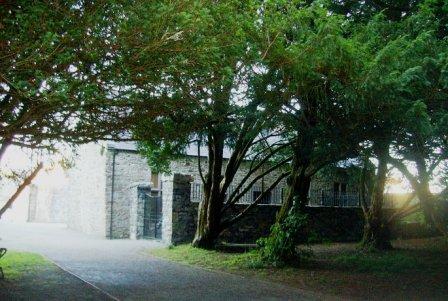
|
| Lackafinna | A house built in the 1840s close to the shore of Lough Corrib and occupied by Ormsby Elwood, brother in law of Dr Watkins Roberts. The house was renovated in 2004 and is now a family home. | |
| Mount Pleasant | Home of George Mahon in 1814 and of Charles G. Mahon in the 1850s when the house was valued at over £22. It is no longer extant. | |
| Robe Villa | A town house on the River Robe, home of the Kenny family for 200 years, sold by them in the early 1980s to the Ballinrobe Rugby Club. |

|
| Purrauns | Home of a branch of the Bell family of county Mayo and occupied by the Lynches in the mid 19th century. At the time of Griffith's Valuation it was occupied by Patrick King leasing from James Lynch when the buildings were valued at £5. Buildings are still extant at the site. |

|
| Ballinafad | Bence Jones states that the house was built in 1827 and was sold to the African Missionary Brothers circa 1908 by Lieutenant Colonel Llewellyn Blake of Ballinafad and Cloghballymore, county Galway. It is recorded as his seat in 1894. The Irish Tourist Association File states that the house was donated to the African Missionary Brothers by Colonel Blake and that a new wing was added in 1932. For sale in 2012. |
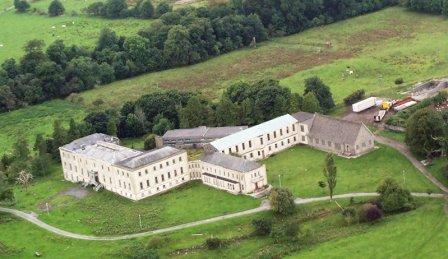
|
| Bridgemount House (Drum) | The home of the Acton family in the 19th century and the seat of G.H.Acton in 1894. At the time of Griffith's Valuation it was held in fee by George Acton and valued at £10. It was later the home of the Coyne family and is still extant and occupied. |

|
| Carnacon House | Home of the McDonnell family in the early 19th century and probably earlier as local sources suggest General James McDonnell, who fought in the 1798 Rebellion, was born there. In 1844 described by Samuel Nicholson as "neat and comfortable, prettily situated upon the lake and ornamented by thriving plantations". It was purchased by the Hughes family in the 1940s and is still in their possession. |
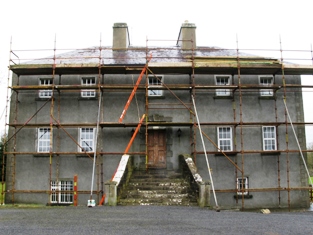
|
| Castlelucas | A house belonging to the Blakes of Ballinafad, let to Lieutenant Hugh Ryan in 1814 and to Mrs Phibbs in the 1830s who subleased to George Ormsby of the Ballinamore family. At the time of Griffith's Valuation, it was leased by Matthew Phibbs from Mark Blake and valued at £5. It is no longer extant. | |
| Clogher | According to Bence Jones this house was built circa 1798 though Wilson refers to a house at Clogher as the seat of Patrick Lynch in 1786. In 1844 Samuel Nicholson described Clogher House as "amongst the largest and the best in the Country, and appears to be kept in excellent order". Patrick C. Lynch was leasing it from Sir Robert H. Blosse at the time of Griffith's Valuation, when it was valued at £40. It was in the ownership of the Fitzgerald Kenney family at the beginning of the 20th century and is now a ruin. |

|
| Hollybrook | In 1786, Wilson refers to Boullybeg as the seat of Mr. Crean. This house was the home of the Creans and Crean Lynches. At the time of Griffith's Valuation the house was occupied by Ephraim and George Anderson, leasing from Patrick C. Lynch, when it was valued at £25. It is now a ruin. |

|
| Errew | An unoccupied house and offices valued at £11 were held by James Hardiman at the time of Griffith's Valuation. A school and monastery are shown on the 25-inch Ordnance Survey map of this area in the 1890s. These buildings are still extant. | |
| Fortlawn Cottage | William Mulrooney held this property in fee at the time of Griffith's Valuation when it was valued at £5. It is labelled as Fortlawn Cottage on both the 1st and 25-inch edition Ordnance Survey maps. A house is still extant at the site. | |
| Hazelrock Lodge | Valued at £5 at the time of Griffith's Valuation and held by the Honourable George Frederick Yelverton from Viscount Avonmore. The National Inventory of Architectural Heritage contends that it was built in the early nineteenth century for Barry John Yelverton, third Viscount Avonmore. It is now a ruin. |

|
| Kinturk | A residence of the Bourke family in the early 19th century, situated beside Kinturk Castle. In 1786 Wilson refers to it as the seat of Mr. Burke. The townland was in the possession of Rev. H.N. Ormsby at the time of Griffith's Valuation. | |
| Ballinrobe Castle | A Bourke castle, restored by James Cuffe in 1752 and sold to the War Office in 1821 for use as a military barracks though a barracks existed there in the 18th century as Wilson refers to the town having a barracks with two companies of foot in 1786. The barracks were valued at £75 at the time of Griffith's Valuation. It ceased to be a barracks in the 1920s but substantial ruins of the buildings remain. |

|
| Portroyal | In 1786 Wilson refers to Port Royal as the seat of Mr. Gildea. At the time of Griffith's Valuation, the townland was in the possession of James and Anthony Knox Gildea and the house was valued at £2 10s. The house is not shown on the 25-inch Ordnance Survey map of the 1890s. | |
| Thomastown | Thomastown was originally leased by Christopher Bowen to Francis Lambert in 1777. It was the residence of Thomas Valentine Clendining in the first half of the 19th century. The unoccupied house was held by Charles G. Mahon at the time of Griffith's Valuation when it was valued at £30. Some buildings survive at the site. | |
| Toormakeady Lodge | Robert Graham in 1836 refers to "Mr Plunket's cottage residence" while in 1837 Lewis describes it as a summer lodge of Dean Plunkets. Sold in 1876 to the Mitchell family of Bradford. Restored in the 1960s and used as a guest house. |

|
| Towerhill | A late 18th century house, occupied by the Blakes until the mid 20th century, now a ruin. 1n 1894 Slater refers to it as the seat of Colonel Maurice Blake. It was valued at £60 at the time of Griffith's Valuation, when it was occupied by Valentine O'Conor Blake. |
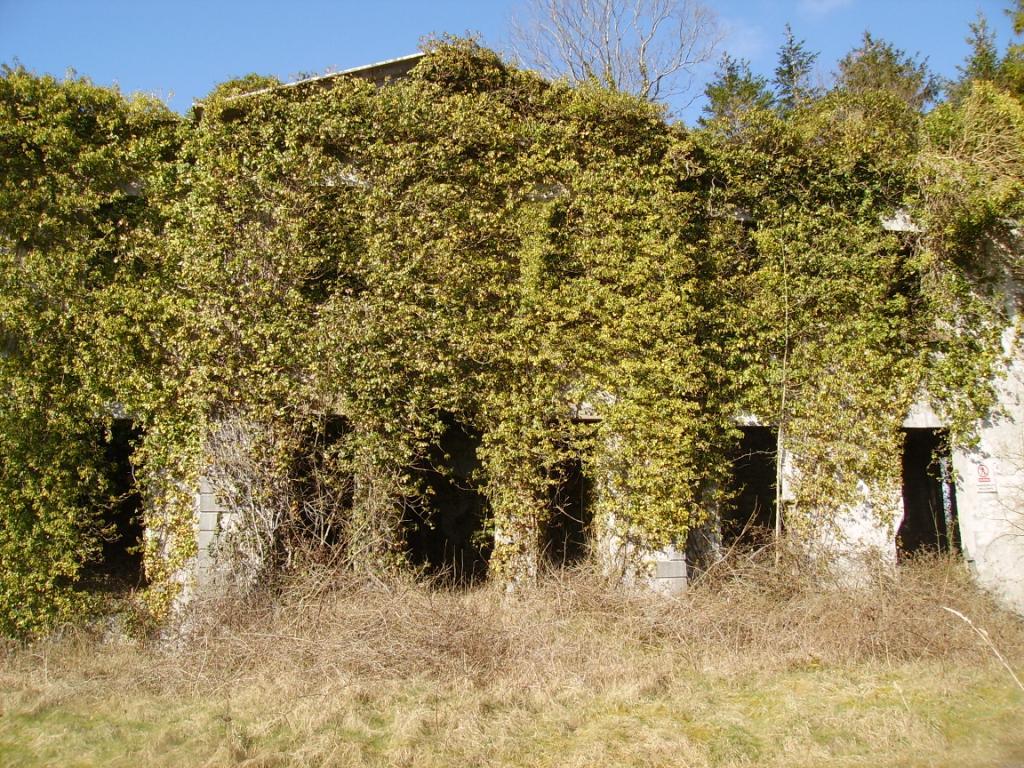
|
| Lough Mask House | This house was constructed in the early 1840s when Ormsby Elwood was agent to the Earl of Erne. Robert Fair was occupying the house, valued at £10, at the time of Griffith's Valuation and would appear to have taken over as agent to Lord Erne. In the autumn of 1880 Lough Mask House was the scene of the first boycotting incident when Charles Boycott was the agent for the estate. By the mid 1880s Bernard Daly had bought Boycott's lease of the house and farm and his descendants continue to live at Lough Mask. |
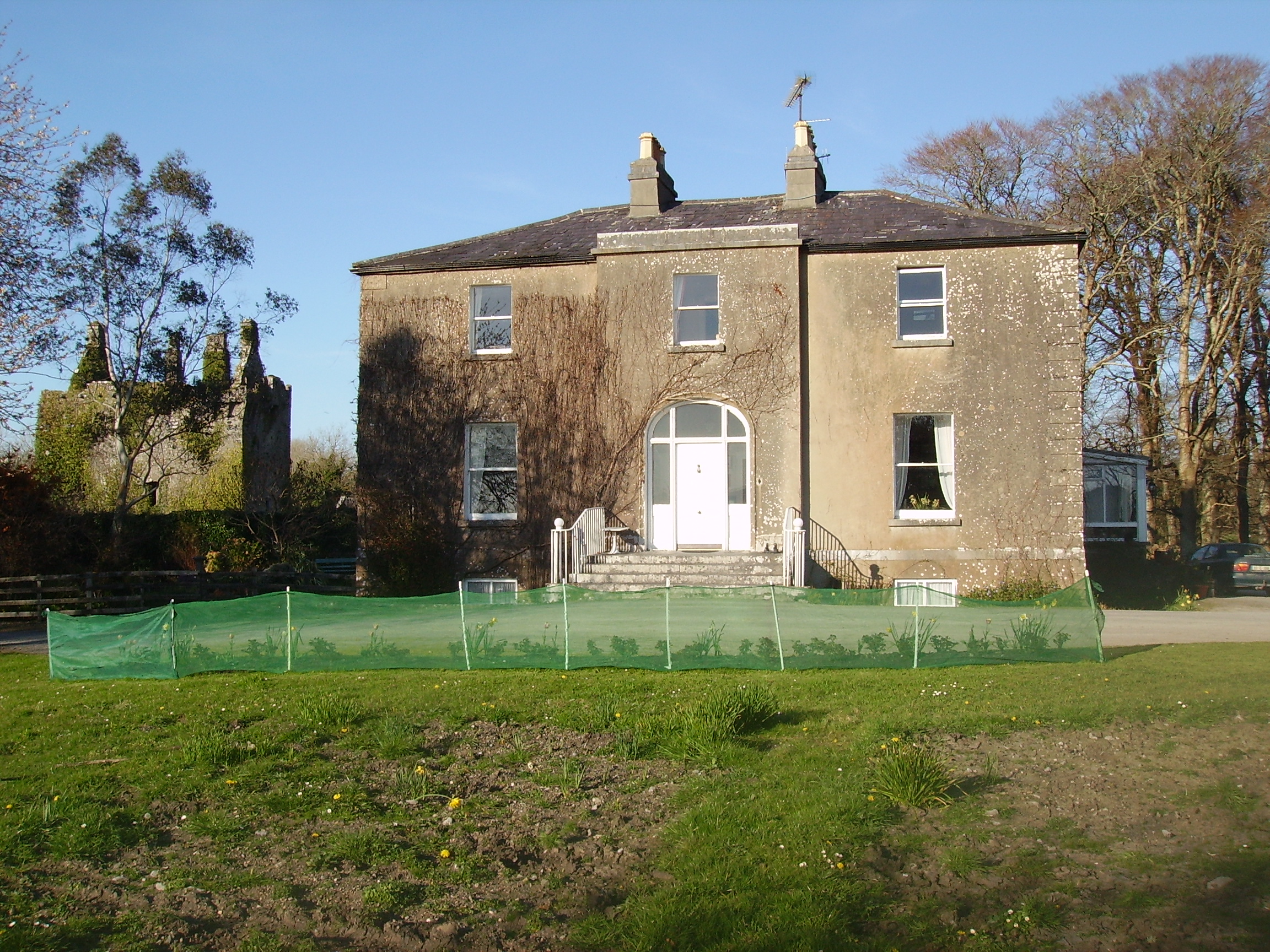
|
| Cloonee | A house built circa 1760, sometimes known as Lakeview. It was occupied in the late 1770s by a member of the Browne family and from the early 19th century by the Blakes. Thomas Walsh was the occupier at the time of Griffith's Valuation. He held the property from Colonel Charles Knox. Cloonee was the home of William Creagh Burke in the early 20th century. The "Connaught Telegraph" of 9 March 1935 reported the sudden death of William C. Burke of Lakeview in the Main Street of Ballinrobe when a fair was taking place. The property passed by marriage to the Ruttledge family of Bloomfield. see www.clooneehouse.com/ |

|
| Springvale | Springvale was noted by Lewis as the home of Henry Joseph Blake in 1837. At the time of Griffith's Valuation the house was leased by Henry Blake from Joseph H. Bath and was valued at £8. A substantial corn mill in the townland, valued at £25, was leased by Henry Blake to Patrick Tierney at the same time. The house was later the residence of the Mayne family. It is still extant and occupied. The mill building is also still visible. |
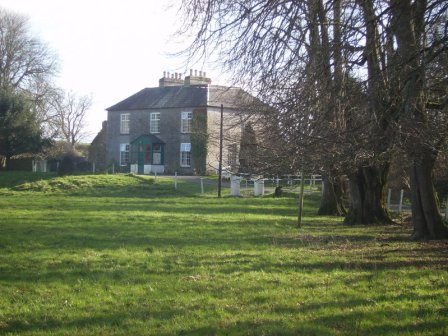
|
| Cloonnagashel | A house inhabited by the Gildea family from the mid 18th century and situated on the estate of the Earls of Lucan. Wilson refers to it as the seat of James Gildea in 1786. It was the home of James Simpson between 1855 and 1880 , valued at £25 at the time of Griffith's Valuation. Later occupied by the Egan family. It now functions as the club house for Ballinrobe Golf Club. |
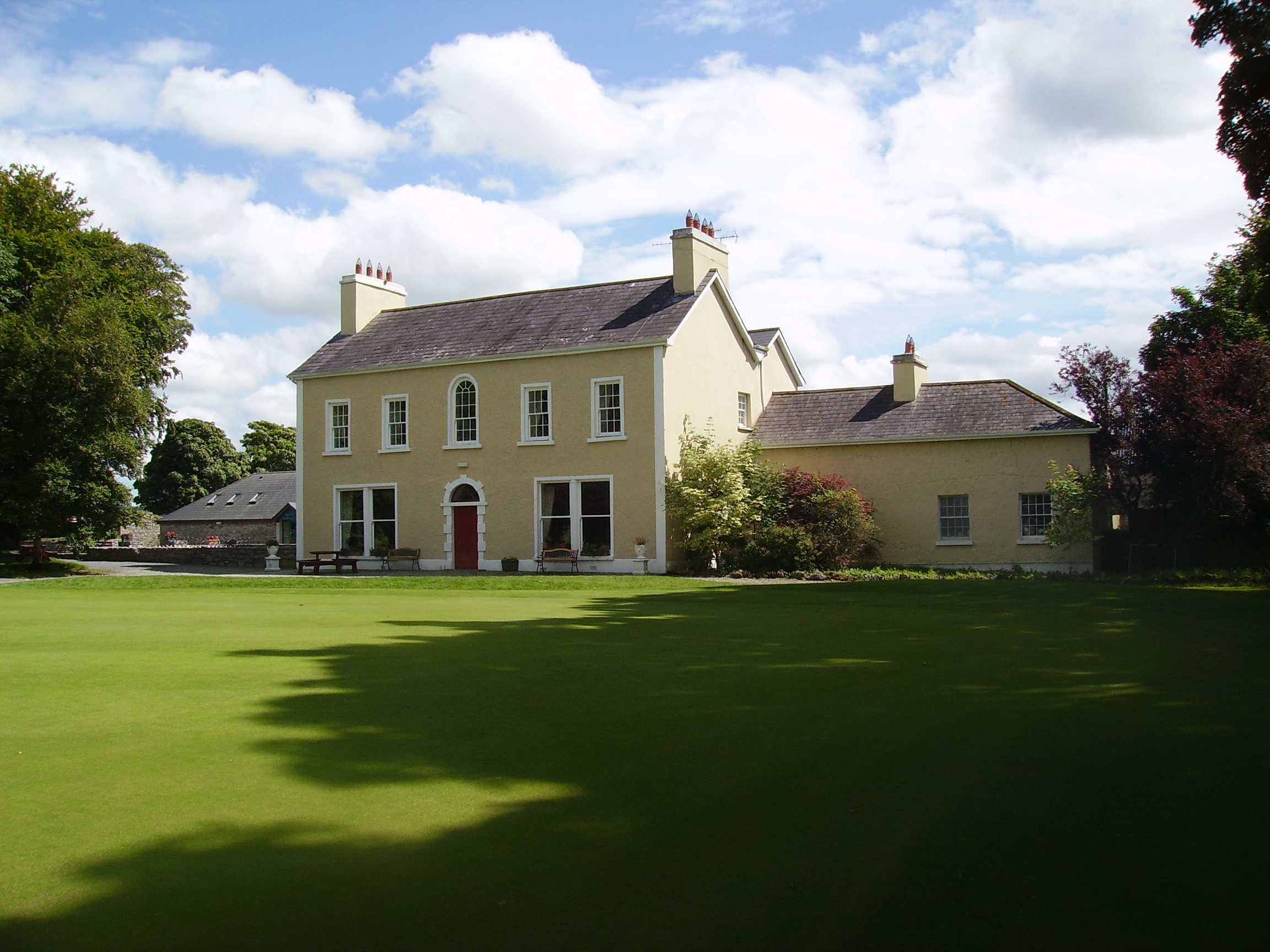
|
| Cranmore | Built in 1838 by Alexander Clendining Lambert on land he held on lease from Colonel Charles Knox. It reverted to the Knoxes after the Famine and was used as a dower house by Colonel Charles Howe Cuff Knox for his mother, a daughter of the 2nd Marquess of Sligo. The house was bought by the Daly family in the 1920s and sold to the McCartans in the late 1940s. They took off the roof in the 1950s and the house is now a ruin. |

|
| Cuslough | Lewis describes this house as formerly a 'seat of Lord Tyrawley and now of R.Livesay'. At the time of Griffith's Valuation it was occupied by Richard Livesay, leasing from Colonel Charles Knox, when the house was valued at £12. It stood close to the ruins of Cuslough Castle. | |
| Curramore House | Bence Jones dates this house as circa 1830. At the time of Griffith's Valuation it was occupied by Geoffrey Martyn and valued at £20. It was still in the possession of the Martyn family in the mid 1920s. Curramore is still extant and occupied. |
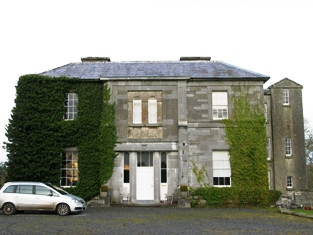
|
| Rathgranagher | A house on the Lindsey estate, lived in by Charles Cromie in the late 1830s. It was occupied by John Jackson at the time of Griffith's Valuation, leasing from Thomas Lindsey, when it was valued at £14. A house is still extant there. |

|
| Greaghans | At the time of Griffith's Valuation this property was held by Robert Bowen and occupied by Dominick Browne. The National Inventory of Architectural Heritage notes that it was later occupied by Robert T. Crawford, agent to Lady de Clifford. It is still extant. |
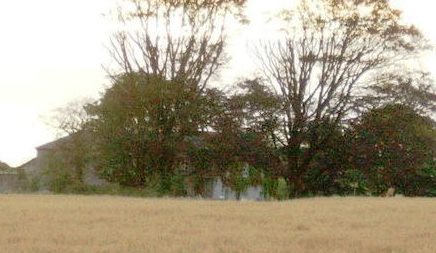
|
| Kilrush | A house in the village of Hollymount, leased by Christopher Bowen from Reverend Christopher Bowen's estate at the time of Griffith's Valuation, when it was valued at £25. Only a few walls remain now. |
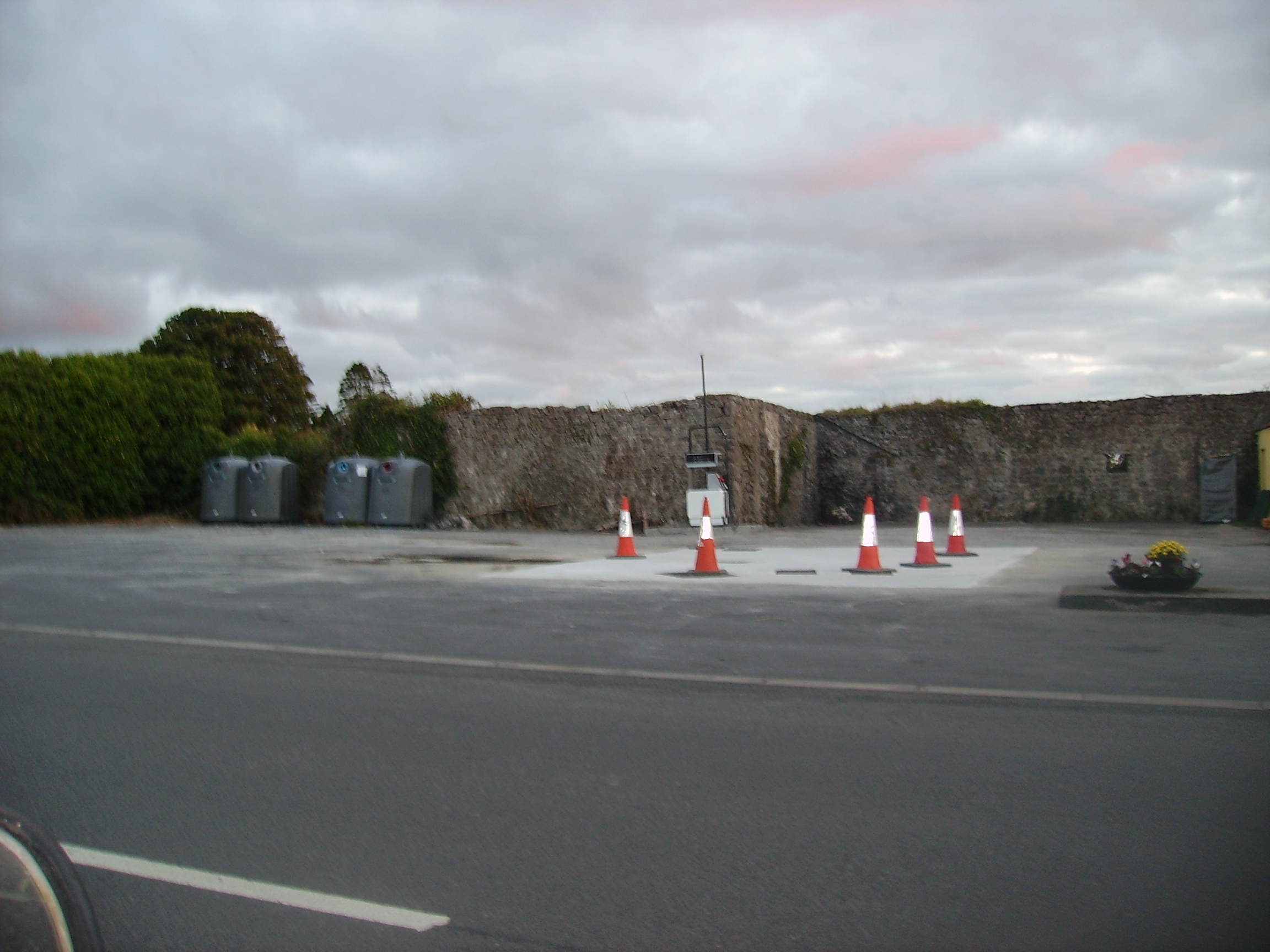
|
| Annefield | Built by Anthony Elwood in 1795, the property passed to the Blakes of Windfield, county Galway, in the mid 19th century. It was occupied by Charles Cromie in the 1830s and at the time of Griffith's Valuation by Emerson Dawson. It was sold to the Brannick family early in the 20th century and was bought by a Mr Fleishche in the 1980s, who restored the derelict house. The house was for sale in 2007. |

|
| Mount Jennings | Home of the Jenings family in the 18th and 19th centuries. Mount Jennings was held in fee by Benjamin Jenings at the time of Griffith's Valuation when the house was valued at £20. It was the childhood home of the ballad singer, Delia Murphy. Her parents still resided in the house in the 1940s. The roof was taken off the house in the 1970s and it is now demolished. | |
| Fountainhill | The home of a branch of the Jennings family for over a hundred years, now a ruin. The house was held in fee by Patrick Blake at the time of Griffith's Valuation, when it was valued at £10. |

|
| Kilrush House | Built as an agricultural school in the 1830s, it was not a success and swiftly closed. The property was rented in the 1850s from the Lindseys by Francis Laurie, a farmer from Scotland. He died in 1865 and James Simpson took over the lease. Charles Bingham Jenings and his wife, formerly of Mount Jenings, lived at Kilrush for the first three years of the 20th century. The building is now a ruin. |

|
| Hollymount | A very early 18th century house built by Archbishop John Vesey of Tuam, altered in the 19th century. In 1786 Wilson refers to it as the seat of Mr. Lindsay. It was held in fee by Thomas S. Lindsay at the time of Griffith's Valuation when it was valued at £61. The home of the Lindsey Fitzpatricks until 1922 and of Mr J Loftus in the 1940s, now a ruin. |

|
| Liskilleen | Built by Courtney Kenny in 1862. He was also the owner of the townland at the time of Griffith's Valuation when a herd's house existed there. It is still extant and occupied. |

|
| Carravilla | There are actually two houses known as Carravilla and both are marked on the Ordnance Survey map of 1838. The house located at M265 637 is named Carravilla House and is situated in a small demesne. The other, smaller, house is located at M262 641. Carravilla was occupied by Robert Fair in the 1830s. At the time of Griffith's Valuation William Ruttledge occupied Carravilla which he held from David Watson Ruttledge. Both houses are still extant. |

|
| Togher | Originally a Lambert residence but occupied by George Ruttledge by 1837. It was held in fee by John Hood at the time of Griffith's Valuation when it was valued at £13.. It became the home of his fourth son, Charles Ralph Hood. This house is now completely demolished. | |
| Bloomfield | Built circa 1776, it was the seat of the Ruttledge family. At the time of Griffith's Valuation it was held in fee by Robert Ruttledge and valued at £50. It was also the seat of Robert Ruttledge in 1894. Sold to the Land Commission in 1924 and later abandoned following a fire. |

|
| Bushfield | The original house, now a ruin, was sometimes known as Creaghduff. Creaghduff was occupied by Burke esq in the 1770s. Thomas Ruttledge of Bloomfield made his will at Bushfield in 1797 and died there in 1805. Bushfield was the home of Arthur Knox and his wife Barbara, nee Lambert. Their daughter, Elizabeth, married Annesley Knox of Rappa Castle. Barbara married Charles White as her second husband and sublet the house to Robert Fair, son of Robert Fair of Fortville. It was valued at £15 the time of Griffith's Valuation. Robert Fair of Bushfield had an only daughter, Jane, who married Thomas Ruttledge of Bloomfield and their second son took the surname Ruttledge Fair. A new house was built in the 1920s and is the home of the Delaney family. Extensive remains of the original Bushfield farmyard survive at the site. |

|
| Fortville | Fortville was occupied by Robert Fair in 1814. At the time of Griffith's Valuation it was the residence of Anthony Kyne. Now the home of the Curran Flannery family, the Curran family having lived there since the 1910s. |
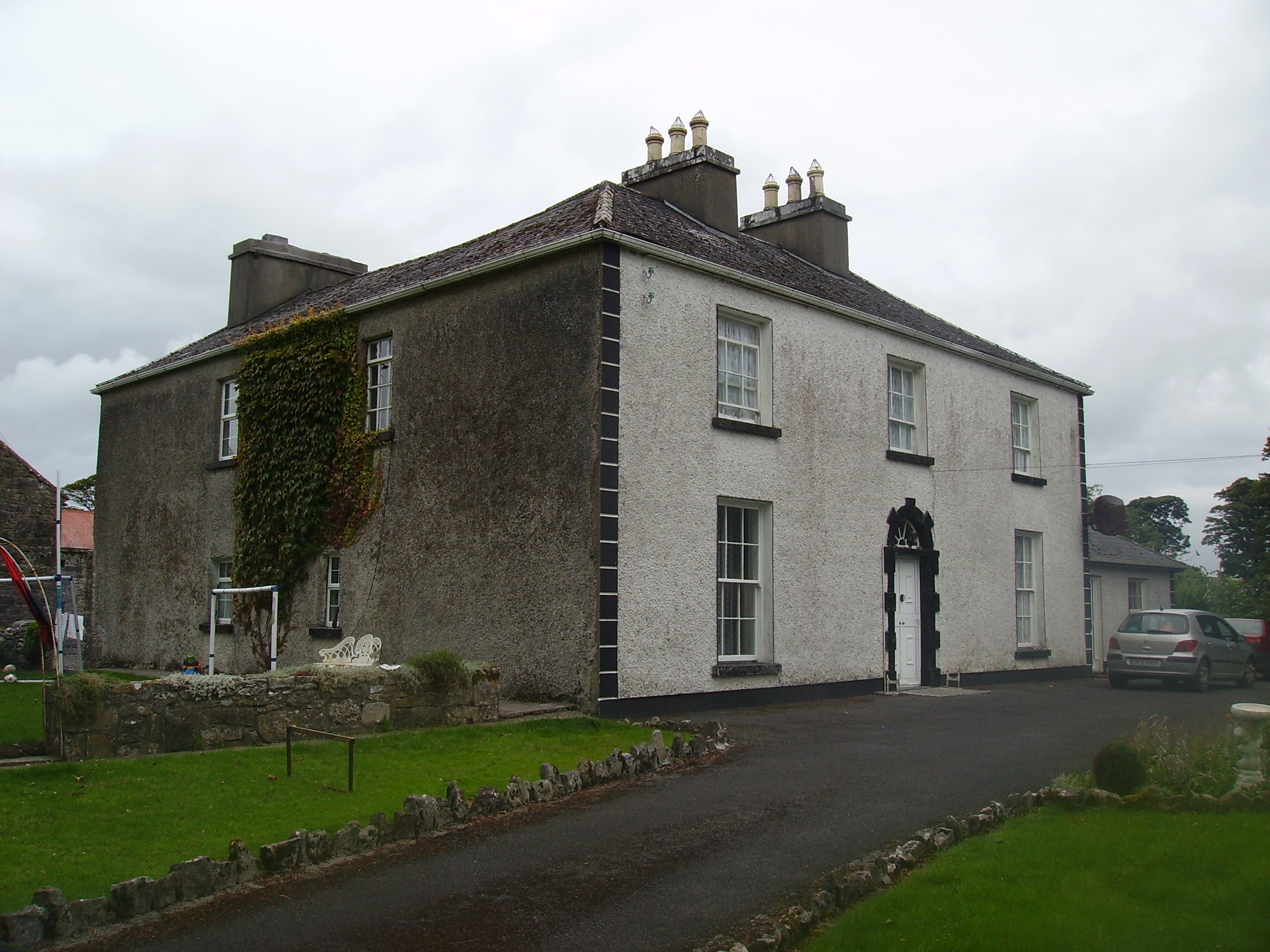
|
| Gallow's Hill | Occupied by James Simpson at the time of Griffith's Valuation when the buildings were valued at £20 and leased from the Earl of Lucan's estate. On the 1st edition Ordnance Survey map the name "Gallowshill" is attached to linear set of structures set out in small plots. This has disappeared by the 25-inch edition map of the 1890s and the substantial structure leased by Simpson is located some distance away. The site of this is now almost completely overgrown. | |
| The Neale | An early 18th century house, with a number of follies designed by Lord Charlemont. Wilson refers to it as "the superb and beautiful seat of Sir John Browne" in 1786. It was occupied by the Reverend James Cromie, brother-in-law of the 2nd Baron and his family, for most of the first half of the 19th century. The house was valued at £25 at the time of Griffith's Valuation. It was sold in the 1930s and most of the house is now demolished. |

|
| Newbrook | In 1786 Wilson mentions Newbrook, the "elegant and delightful seat" of Henry Bingham. This house burnt down in 1837 and was not rebuilt. Only a small amount of the walls of the house remain but the yard buildings are still in use. |

|
| Summerhill House (Kilmaine) | The residence of Parsons Persse, agent to Lord Clanmorris, at the time of Griffith's Valuation when the house was valued at £8. Summerhill no longer exists but the yard buildings still remain. |

|
| Beechgrove | This house was leased by George Rutledge from Robert Fair at the time of Griffith's Valuation when it was valued at £10. Beechgrove was noted by Lewis as a residence of the Brannick family in 1837. It is still extant but unoccupied. |

|
| Brownstown | In 1786 Wilson refers to Brownstown as the seat of Mr. Browne. This house is shown on the 1st edition Ordnance Survey map but marked 'in ruins' on the later 25-inch edition. The townland was in the possession of George Browne at the time of Griffith's Valuation. The Irish Tourist Association file describes the house as a 3-storey T shaped plain residence, uninhabited for about 60 years. |

|
| Clooncormick | Home of the Gildea family in the 19th century and of the McCartan family in the late 20th century until it was destroyed by a fire. Francis Knox Gildea was leasing from James Knox Gildea at the time of Griffith's Valuation, when the property was valued at £45. No trace of the house remains but much of the stable yard is still extant. |
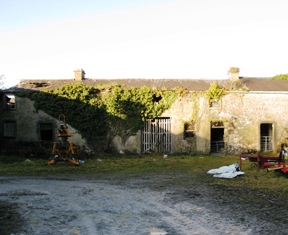
|
| Cornfield | Cornfield was the original Ruttledge home in the Hollymount area and continued to be lived in by family members until the 20th century, although it was replaced as the family's principal residence by Bloomfield. In 1786 Wilson refers to it as the seat of Mr. Ruttledge. In the mid 19th century it was the home of Thomas Ruttledge who married Jane Fair. He was leasing from Robert Ruttledge and the buildings were valued at £20. The existing dwelling is part of the original house, as are the ruins beside it. Local sources suggest that portions of the original house were demolished when the property was acquired by the Land Commission and some of the stone used to build houses in Hollymount village |

|
| Garriestown | This was a Walsh family home in the 19th century. At the time of Griffith's Valuation the house was leased by Thomas Walsh from Robert Rutledge when it was valued at £11. Garriestown is now a large farming enterprise and the house is still lived in. |
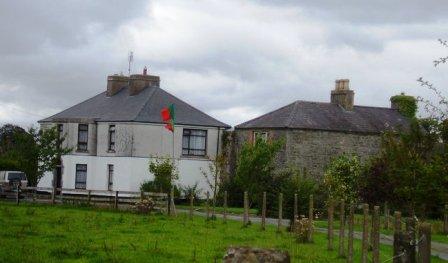
|
| Cappagh | Cappagh was occupied by James Tighe at the time of Griffith's Valuation when the house, valued at £4, is described as a herd's house. It was built some time before the publication of the 1st edition Ordnance Survey map of 1838 and is still extant and well-maintained. |

|
| Coarsefield | The Grays were in possession of Coarsefield by the late 1830s. The present house was probably built by the Tighe family who bought Coarsefield from the Grays and sold it to the Stephens family in the early 20th century. |
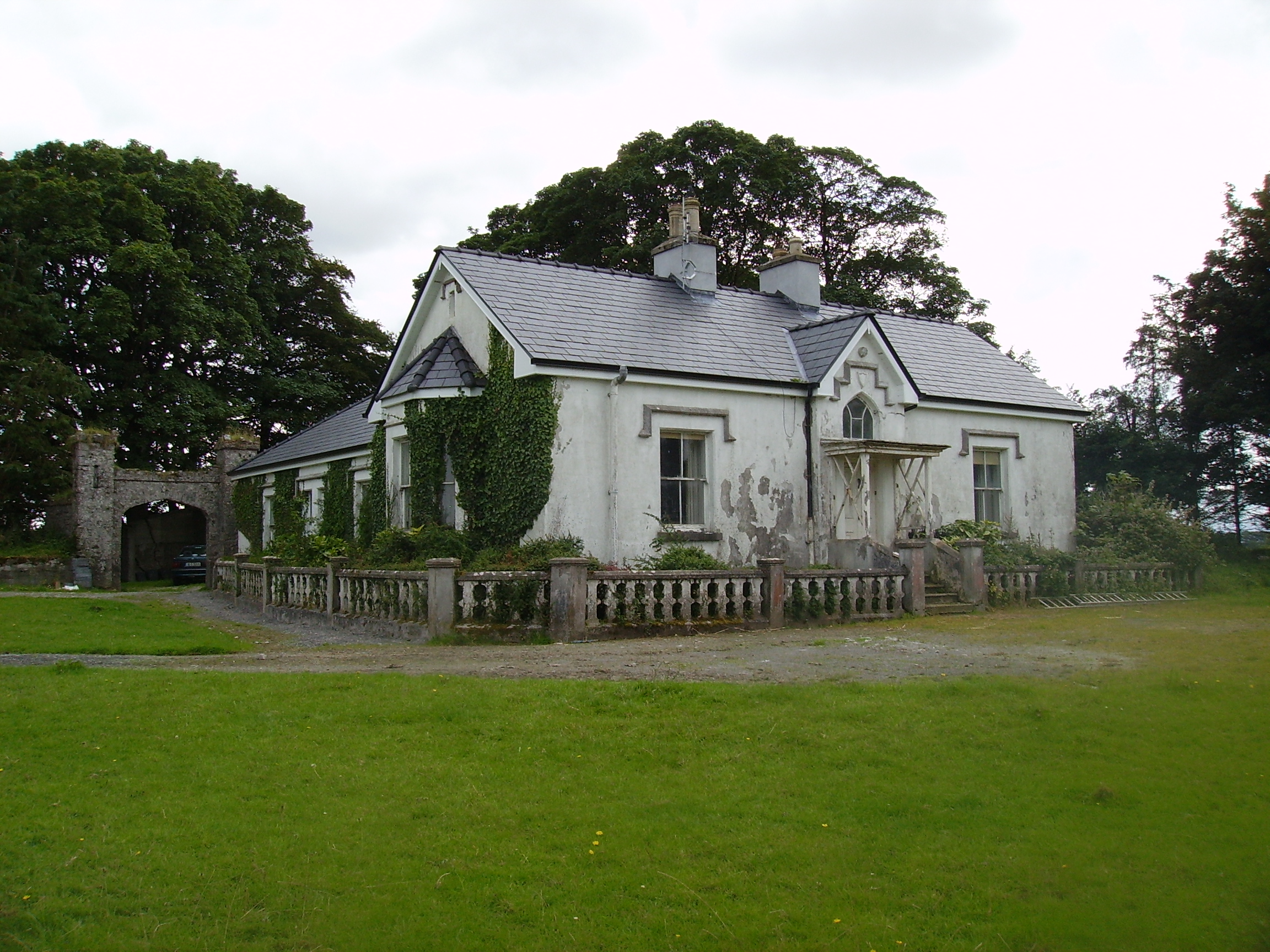
|
| Lehinch | A house marked on the Taylor and Skinner's map but not on the first Ordnance Survey map. In 1786 Wilson refers to it as the seat of Valentine Blake. The walls of the garden still remain and this was the venue for the Hollymount Show at one time. |

|
| Ashford Castle | Originally a shooting lodge, in the style of a French chateux, built on the shore of Lough Corrib by the Browne family of Castlemagarret and occupied in the late 18th century by a branch of that family. Thomas Elwood was agent for the Brownes in the early 19th century and is recorded as the occupier in 1814. Sold after the Famine to Benjamin Guinness. His son Arthur Lord Ardilaun expanded the building in the style of a Gothic castle. Sold by the Guinness family in 1939 the castle now functions as a world famous hotel. |

|
| Rosshill | Rosshill House was the home of the Bermingham family in the 18th century and was noted by Wilson in 1786. It gradually declined during the 19th century and only one wing of it was still standing in 1865. The Guinness family of Ashford Castle bought Rosshill and much of the surrounding locality. No part of the house now remains but a portion of the stable block is still extant. |

|
| Petersburg | An early 18th century house, the seat of the Lynch family in the 18th and 19th centuries. Wilson refers to it as the seat of Mr. Lynch on the shore of Lough Mask in 1786. In 1986 the house and immediate surrounds were vested in the county Galway Vocational Education Committee. The house and yard buildings have been completely renovated and now function as an Outdoor Education Centre. |

|
| Drimbawn | Built by Catherine Plunket and now owned by the Wilson family. At the time of Griffith's Valuation it was occupied by Catherine Plunkett leasing from the Lynch Blosse estate when the house was valued at almost £5. |

|
| Blake Hill | A house on the estate of the Provost and Fellows of Trinity College, Dublin, occupied by the Blakes of Menlo in the late 18th century/early 19th century. Thomas Blake of Brendrum, county Galway, married Mary Lynch, granddaughter of Sir Roebuck Lynch Blosse, 2nd baronet, and they were the parents of the 9th and 10th Blake of Menlo baronets. By the time of Griffith's Valuation the most valuable house in the townland of Breandrim was a herd's house of £4.15 occupied by C. B. Kenny. On the 25-inch edition Ordnance Survey map of the 1890s Breandrim House is recorded as "in ruins". Old yard walls remain at this site. |

|
| Oory/Coarsefield | It is probable that the townland of Coarsefield was part of Oory in the 18th century and that Oory was divided into two townlands at the time of the first Ordnance Survey. The remains of an old house are still visible at Coarsefield, close to the present house, and it is believed that this was Oory House, home of the Bourkes and later owned by the Nettervilles. In 1814 "Course-field" belonged to James Netterville. The sales rental of the Gray estate of Coarsefield in 1861 refers to one wall remaining of the old Netterville house. |
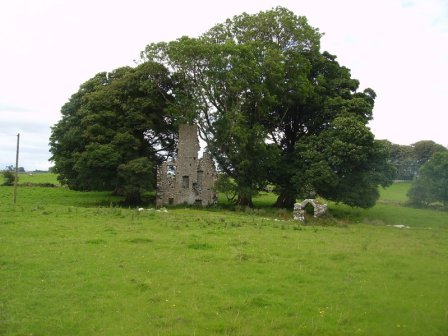
|
| Castleburke | A home of the Bourke family and their descendants. Occupied by Patrick Horan in 1814 and from 1821 James Tuohy was the tenant. The castle was in ruins by the time of the first Ordnance Survey circa 1838. It is now owned by Eamonn de Burca. | |
| Ellistron Castle | A Browne castle, a house is marked close by as the residence of the Brownes in the 1770s. In 1786 Wilson refers to Ellistron as the seat of Mr. Browne. However there is no house at this location on the 1838 Ordnance Survey map but an avenue is shown there. | |
| Kinnewry House | Home of Charles Crotty in the second half of the 19th century. The grid reference for this property is approximate. | |
| Gardenfield House [Kilcommon] | Another Bowen home, occupied by William Bowen in 1814. The townland was in the possession of Henry Martin Blake at the time of Griffith's Valuation. It is labelled Gardenfield House on the 25-inch edition Ordnance Survey map of the 1890s. Still a family home, renovated in the early 21st century. |
![Photo of Gardenfield House [Kilcommon]](https://landedestates.ie/storage/img/orig/731.jpg)
|
| Drumminroe | Malachy Tuohy held a house valued at £8 from George Henry Moore at the time of Griffith's Valuation. Members of the Tuohy family still occupy this house. |

